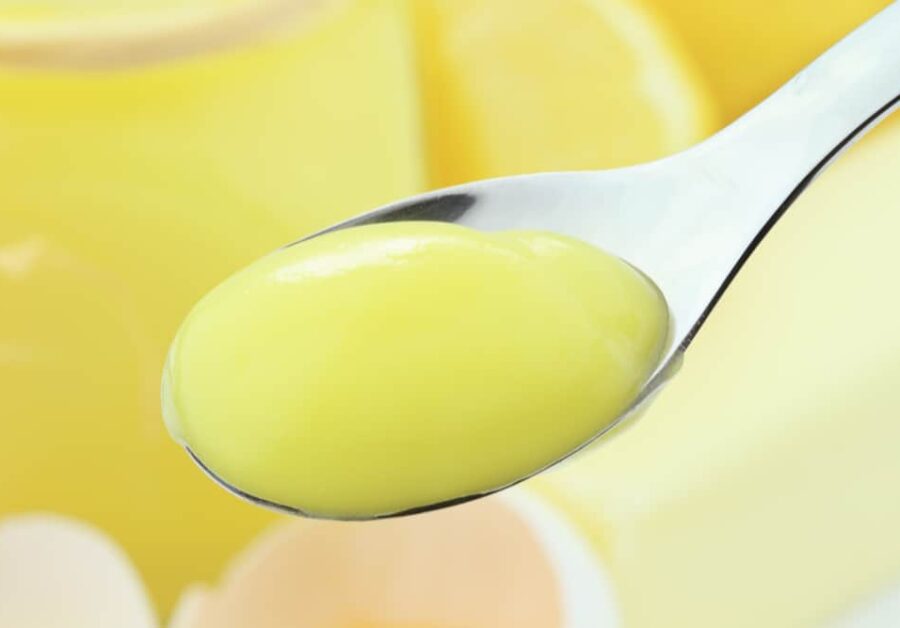For lemon lovers out there, choosing between lemon curd or lemon pudding really isn’t hard to do.
After all, both of them are awesome!
As if their delectable flavor wasn’t enough to get your tastebuds tingling, both of them are extremely versatile. Whether you’re eating them on their own or using them as an ingredient to add another dimension of richness to a dessert, you really can’t go wrong.
But sometimes, you might want to use one or the other depending on the recipe you’re considering, or maybe you’re wondering if they can be substituted. Though the differences between them aren’t huge, they exist and that’s what we’ll be looking at in this article.
The primary difference between lemon curd and lemon pudding is that curd uses egg yolks as its main thickening agent, whereas most lemon pudding recipes use cornstarch.
There are some additional things that make each of these beloved sweets unique, including how they came to be, what the taste differences are and more.
So without any delay, get those tastebuds ready and let’s dig in together!
Origin Differences
The origins of lemon curd can be traced back a little more than a hundred years ago, where it gained notoriety in England.
However, it’s thought that the first mention of the tasty dessert appeared in print form in England about middle of the 19th century. A novelist known as Lady Charlotte Bury wrote about a dessert that closely resembled modern curd in her book, “The Lady’s Own Cookery Book”.
More cheese-like in its finished curd form, her recipe combined lemon with cream and then whisked them together. Whisking caused the ingredients to acidify and once it had, a cheesecloth was used to separate it. Once the separation was complete, the curds remained.
Over time, the original recipe was experimented with and sweeteners were added as well. Once this happened, the usage of curd exploded and it was used in desserts of all kinds. Most often it was used as a filling for tarts and, although it was hugely popular, the downside to curd was that it could spoil quickly. Since there wasn’t any refrigeration at this time, it was usually only made in batches small enough for immediate use.
Puddings can be divided into either savory (salty and spicy) or sweet varieties, but for this comparison, we’ll limit the discussion to sweet puddings only.
Pudding is closely related to custard. It’s thought that today’s modern pudding can be traced as far back as the Middle Ages throughout Europe. During this period, the dessert was consumed in a variety of ways – alone or as a filling for things like pies and tarts.
As time passed and the dessert found its way to America, the gap between the European version and the American version widened. Ironically, during the same period that Lady Bury was writing her book on curd, a chemist working in England named Alfred Bird invented a custard powder that could be used as a substitute for eggs used to thicken custard.
American cooks took his innovation a step further and added additional thickening agents like cornstarch. Since these ingredients didn’t spoil, the use of eggs could be eliminated and it wasn’t long before pudding took hold across the country.
| Name | Origin | 19th Century Mention | Ingredients | Variations | Preservation |
|---|---|---|---|---|---|
| Lemon Curd | England | Lady Charlotte Bury’s book | Lemon, cream, sweeteners | used in various desserts | Can spoil quickly |
| Lemon Pudding | Europe | Middle Ages | Various, including eggs and thickening agents | Savory and sweet varieties | Can be preserved with the addition of thickening agents and the elimination of eggs |
Ingredient Differences
Although there are some differences depending on taste and texture preferences, most lemon pudding consists of sugar, cornstarch, milk, cream, egg yolks, lemon juice and salt. Besides the simple ingredients, making the pudding itself is often as simple as combining all the ingredients in a saucepan and warming them over a medium heat.
A simple lemon curd recipe usually has sugar, lemon juice, egg yolks and sometimes lemon zest. The egg yolks are beaten and then combined with the sugar and lemon juice. Once mixed, the ingredients are cooked, then cooled, at which point it becomes a smooth, spreadable delight.
| Name | Ingredients | Method of Preparation |
|---|---|---|
| Lemon Pudding | Sugar, cornstarch, milk, cream, egg yolks, lemon juice, and salt | Combined in a saucepan and heated over medium heat |
| Lemon Curd | Sugar, lemon juice, egg yolks, lemon zest (optional) | Beat egg yolks combined with sugar and lemon juice, cooked, then cooled for a smooth spread |
Taste Differences
Because lemon curd uses egg yolks as a thickening agent, it has a much richer, almost buttery-like taste to it. The richness imparted by the yolks dampens the citrus from lemon and mutes it somewhat.
In contrast, a bright lemon flavor is probably the first thing you’ll notice with pudding. Even though cornstarch is an effective thickener, it doesn’t compete with the citrus flavor of the lemon as strongly as egg yolks, which tends to make it taste “brighter”.
| Name | Flavor Profile |
|---|---|
| Lemon Curd | Rich, buttery with a muted citrus flavor |
| Lemon Pudding | Bright lemon flavor |

Hey there, I’m Melody! I’m a lifelong foodie and love talking about it to anyone who’s willing to listen (or read!) about my opinions. My favorite pastimes include cooking, eating my cooking and thinking about what I’m going to make next!

